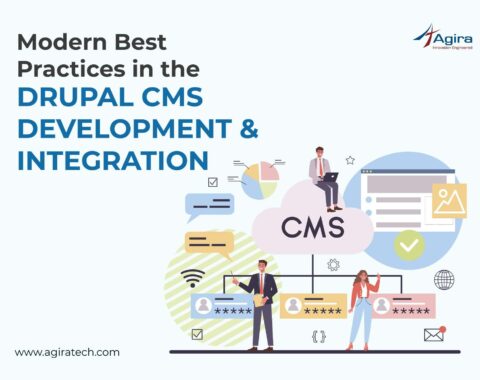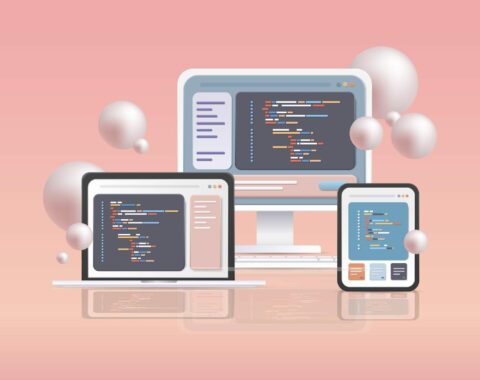Web development for UK beauty products
Because of the digital revolution, the beauty industry (which includes body care, skin care, makeup, hair care, nail care and fragrance) is the fastest growing business in the consumer goods category. Digitalization has changed the way beauty companies/product sites communicate with their customers/buyers via social media and e-commerce. As a result of digitalization, beauty brands and their national and local consumers form long-term relationships.
The beauty market in the United Kingdom is expected to be worth £12.14 billion in 2022. Furthermore, the UK cosmetics market is seeing significant digital growth, with 37.2 percent of customers purchasing health and beauty products online. The organic cosmetics market in the United Kingdom is expected to reach £339 million by 2025.
A beauty website’s design must be both aesthetic and sophisticated. The appearance and feel of a website are important for business communication and user experience.
This blog outlines various processes involved in web design and development services to assist beauty clients in the UK in attracting visitors’ attention and standing out from the competition.
Step #1: Collection, exploration and knowledge gathering
The first step in creating a website is to gather, investigate and learn about beauty industry trends. At this point, the designer creates a paper model of the beauty client’s vision. It is critical to comprehend both the goal of creating a website and the intended audience.
Step #2: Digital strategy for UK beauty centres and salons
A digital or online strategist is typically in charge of developing a digital strategy for beauty businesses and salons in the United Kingdom. The strategy entails a thorough examination of the business, brand and digital marketing goals of the UK beauty client, culminating in a data-driven conversion funnel and user journey mapping. It also refers to a set of digital action plans employed by UK beauty brands and retailers. A client kick-off call, a client questionnaire and market research and analysis are all common ways for a digital strategist to kick off the site design process.
Step #3: Site research and planning
The research and planning process includes creating a sitemap, which serves as the framework and skeleton of the website, as well as mapping the content within each page. The sitemap can be used by digital strategists to define user paths to conversion points, making the site more user-friendly. The next step in this process is to create the pages and content for all of these phases: awareness, interest, consideration and conversion.
Step #4: Beauty product site design – UI & UX
Approximately 88 percent of online buyers say they would not return to a site if they had a bad user experience. Not only are user experiences important for eCommerce websites, but they also serve as a gateway to user satisfaction. There are two steps in the website design process.
UX (User Experience) Design: UX experts convert the website design into black-and-white page sketches known as wireframes at this stage. The wireframes are meant to demonstrate the content layout and visualise the conversion funnel without using distracting elements like colour or photography. Agencies either build responsive websites or desktop-first designs that are scaled to mobile based on digital strategy insights, or they create mobile-first designs.
User Interface (UI) Design: After the wireframes have been approved, the web design team moves on to the finer details that bring the website to life. UI designers add colour and imagery to wireframes at this stage, as well as define fonts, shapes and other effects. The approved UI design is then turned into a style guide and delivered to the development team. The design team creates a style guide for the client’s website to ensure consistency throughout the site and to maintain it consistent as it grows. Logos, colours, image and photography and typography are the most typically defined aspects in style guides for use across the website.
Website redesign: A website redesign is the process of transforming an existing site to make it more modern, richer, or efficient. The MOBILE redesign makes the site mobile and media friendly (responsive). Design redesign enhances the site’s design for a better user experience, while SEO STRUCTURAL REDESIGN enhances the site’s content for a larger audience and better referencing.
Step #5: Content writing and assembly
This phase includes both the creation of new content and the preparation of existing content for migration. The significance of creating and editing content, which often overlaps with other phases of website development, cannot be overstated. Designing prominent headlines, editing text, creating a new text and assembling existing text can all be time-consuming and labor-intensive tasks. All website contents should be provided prior to or concurrently with website coding.
Step #6: Coding process
In the coding process phase, a site is built and deployed, special features and interactivity are added to the site and SEO (beauty keywords, local keywords, solid keywords and technical keywords) for the website is nailed.
Step #7: Site development
Full-stack refers to both the front and back ends of a web development project. Every website has two fundamental components: the frontend and the backend.
The critical components in website development are the frontend and backend The frontend signifies the visual aspects of a website that a user can see and experience. The backend handles everything that happens in the background to enable the frontend experience.
The client side of a website is often referred to as the frontend, whereas the server side is referred to as the backend. Backend development languages include Java, PHP,.Net, Ruby and Python, while frontend languages such as HTML, CSS and JavaScript are widely used.
Full-stack skills in demand include:
JavaScript, Linux, Apache, MySQL and PHP comprise the LAMP Stack.
JavaScript, MongoDB, Express, AngularJS and Node.js are the components of the MEAN stack.
JavaScript, Ruby, SQLite and Rails are ruby on Nails
JavaScript, Linux, Nginx, MySQL and PHP comprise the LEMP stack.
JavaScript, Python, Django and MySQL comprise the Django stack.
Site Integration with social networks: Influencers, customer segmentation and modification are three methods for spreading information on social media. There are nine distinct social media platforms and forms.
Audio platforms include Clubhouse, Twitter Spaces and Spotify.
Video platforms include YouTube, TikTok, Instagram Stories and Reels and Facebook Watch.
Disappearing content includes SnapChat, Instagram Stories, Facebook Stories and LinkedIn Stories.
The discussion forums are Reddit and Quora.
Product Pins on Pinterest, Facebook Shops, Instagram Shops, TikTok, Shopify, Douyin and Taobao can all be purchased.
Live Streaming platforms include Twitch, YouTube, Instagram Live Rooms, Facebook Live and TikTok.
LinkedIn and Twitter are professional social networks.
Closed/private communities include Discourse, Slack and Facebook Groups.
Pinterest, YouTube, Instagram and blogs are all great places to get ideas. An original and creative “About” page to distinguish the client’s digital business: The About page of the site is the ideal place to convey clients’ business values and especially to humanize clients’ online business. This page removes the anonymous side of the Internet and reassures customers.
Conversion Rate Optimization: There are five steps to improve the conversion rate of the site visitors into customers such as purchase tunnel, customer route and user experience analysis; determine the value of each page; conducting tests on web pages and learning from the user; personalise to improve user experience and iterating the process of analysis, testing and deployment of actions.
Step #9: Site testing, review and launch
Before launching the website, it must be internally tested with real users. During this quality assurance phase, all links and content, as well as technical functionalities such as forms, sign-ups and other features, are tested. User feedback is critical at this point because it can convey information about what the site should provide to them. It is the responsibility of the digital strategist to determine whether the website CMS provides a good user experience, functions properly and is simple to use. The website should be tested on multiple browsers and devices, according to best practises for quality assurance. It is now time to launch the site after double-checking it.
Step #11: Maintenance and regular updating
Post-launch maintenance is an important part of ensuring that a running website performs consistently, without issues, and is capable of delivering the set goals.
At this stage, the user report system is added, full website backups are created at regular intervals, security measures are audited to prevent malware, adware and other types of virus threats, website speed optimization is performed, new content is added to the website, bugs are fixed as soon as possible and the site is kept up to date.
Conclusion
We strive to be the web development partner of choice for beauty clients seeking digital innovation for their businesses. Agira is a preferred partner for many beauty centres, brands and salons. We assist businesses in increasing their value through website design, development, personalization and customization. Our site personalisation and customisation services enable start-ups and underperforming beauty companies to stand out and compete with existing high-performing digital beauty companies.










